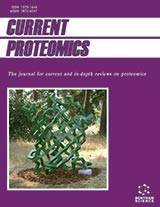Abstract
Background: Membrane proteins are embedded into biological membranes and interact with them, playing a large range of roles from transporting materials to catalyzing interactions in the cellular processes. The functions of membrane proteins are closely associated with types they belong to. Membrane proteins have simultaneously more than one type, but most of the computational predictions can deal with only one type.
Objective and Method: To bridge the gap, we proposed a multi-label method based on the sequence homology and pseudo amino acid composition for predicting human membrane protein types. The method is a two-step decision. The uncharacterized membrane protein firstly was aligned against the database consisting of membrane proteins with known types and types of the most homological membrane protein were transferred to it. If it had no homological membrane protein, the pseudo amino acid composition-based method was used to predict its types.
Results: The predictive accuracies of the leave-one-out cross-validation test on these three benchmark datasets are 0.8817, 0.8206 and 0.7276, respectively, better than our previous algorithm. We collected 5752 manually reviewed human membrane proteins with annotated types as the training set, and developed a program MemPred for predicting multi-label types of membrane proteins.
Conclusion: We have proposed a multi-label computational method for predicting membrane protein types and achieved a better performance. The advantage of the proposed method is that it can predict simultaneously more than one type.
Keywords: BLAST, membrane protein type, multiple label, nearest neighbor algorithm, pseudo amino acid composition, sequence homology.
Graphical Abstract




























